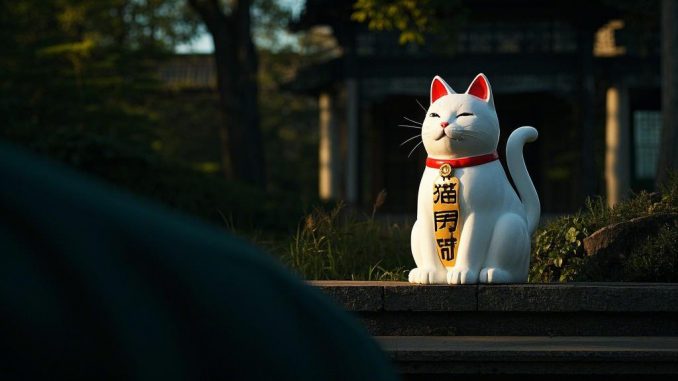

The Maneki – Neko, also known as the Lucky Cat, is a popular and iconic symbol in many East Asian cultures, especially in Japan and China. It is a cute – looking cat figure, often with one or both paws raised, and it is believed to bring good luck, wealth, and prosperity.
I. The Legend of the Maneki – Neko
One of the most well – known legends about the Maneki – Neko comes from the Edo period in Japan. There was a wealthy family called the Yanagisawa family. The young master of the family was very fond of gambling and playing with his cat named “Yuki” (Snow). Due to his irresponsible behavior, the family’s business gradually declined. However, when the family became impoverished, the cat Yuki unexpectedly brought a gold coin to the young master one day. But this lucky event did not change the young master’s habit, and he lost the coin in gambling again. Although this story has some fictional elements, it has contributed to the widespread belief in the magical power of the Maneki – Neko.
Another legend is related to a courtesan in Yoshiwara named Komurasaki. She raised a three – colored cat named “Yuki.” After Komurasaki’s death, the cat was sent to a temple. People believed that the cat could protect its owner from misfortune, and gradually, statues of the cat were made and used as amulets.
II. Placement Taboos of the Maneki – Neko
1.In terms of placement, one important taboo is that the Maneki – Neko should not be placed facing the bathroom. In traditional Feng Shui concepts, the bathroom is considered a place of dirt and negative energy. If the Maneki – Neko faces it, the negative energy may weaken the auspiciousness of the cat figure.
2.For people born in the Year of the Rat, it is generally not recommended to place a Maneki – Neko at home. Cats and rats are natural enemies, and having a Maneki – Neko in a Rat – born person’s home may cause a sense of oppression and affect their sense of security and fortune.
- People born in the Year of the Dragon are also not suitable for having a Maneki – Neko. Dragons have a very strong aura, and the relatively gentle image of the Maneki – Neko may not be compatible with their temperament.
3.When placing the Maneki – Neko indoors, if it is placed in the living room, it is best to put it in a prominent place and near the “Feng Shui wealth position.” The “Feng Shui wealth position” is considered to be the place with the strongest financial energy in the home. Placing the Maneki – Neko here is believed to enhance its ability to attract wealth. It can be placed on the TV cabinet, the display cabinet opposite the door, or the shoe cabinet near the door.
- If the Maneki – Neko is placed in a store, it should face the door. A Maneki – Neko with its left paw raised is suitable for this purpose, as it symbolizes attracting customers. A Maneki – Neko with both paws raised is also a good choice, representing the simultaneous arrival of wealth and blessings.
The Maneki – Neko is not only a charming ornament but also a cultural symbol loaded with rich connotations. Whether its magical effects are based on scientific principles or not, it has become an integral part of traditional cultural expressions in many regions.

Leave a Reply